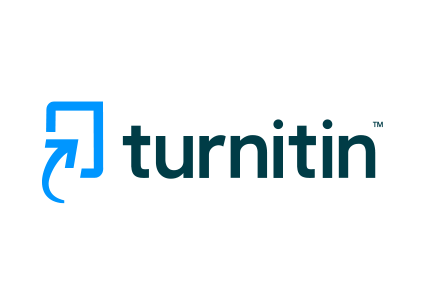Aplikasi Bentonite Lokal Terhadap Nilai Compressive dan Shear Bond Strength Suspensi Semen Sumur Minyak
Application of Local Bentonite to Compressive Value and Shear Bond Strength for Oil Well Cement Suspension
DOI:
https://doi.org/10.25299/saintis.2020.vol20(02).5252Keywords:
Bentonite Komersial, Bentonite Lokal, Compressive Strength, Shear Bond StrengthAbstract
[ID] Pelaksanaaan proses penyemenan yang baik pada sumur minyak merupakan aspek penting yang berpengaruh pada suskesnya produksi minyak ke permukaan. Untuk itu, penggunaan additif dalam suspense semen direkomendasikan supaya kulitas suspense semen tetap stabil selama proses penyemenan berlangsung. Melakui penelitian ini kualitas bentonite lokal dan bentonite komersial terhadap parameter compressive strength(CS) dan shear bond strength (SBS) akan dibandingkan. Pengukuran CS dan SBS dilkukan berdasarkan rekomendasi dari American Petroleum Institute (API) pada tujuh buah sampel suspense semen dengan konsentrasi aditif yang bervariasi. Hasil penelitian terhadap bentonite lokal menunjukkan penurunan nilai CS dengan bertambahnya konsentrasi aditif. Konsentrasi optimum bentonite lokal adalah 1.6% dengan nilai CS sebesar 1649 psi, 6% dibawah nilai CS untuk sampel suspense semen dan bentonite komersial pada konsentrasi yang sama. Untuk nilai SBS, konsentrasi optimum untuk aditif bentonite lokal adalah 4.8% dengan nilai SBS sebesar 439 psi, 21 % diatas nilai SBS untuk sampel semen dengan 4.8% bentonite komersial. Dari penentuan nilai CS dan SBS dapat disimpulkan bahwa penggunaan bentonite lokal dapat menjadi alternatif pengganti bentonite komersial dimana hasil pengukuran CS dan SBS tidak menunjukkan perbedaan yang signifikan.
[EN] The implementation of a good cementing process in oil wells is an important aspect that affects the success of oil production to the surface. For this reason, the use of additives in semen suspense is thought that the quality of the cement suspension remains stable during the cementing process. By doing this research, the quality of local bentonite and commercial bentonite against the parameters of compressive strength (CS) and shear bond strength (SBS) will be compared. CS and SBS measurements were carried out based on recommendations from the American Petroleum Institute (API) on seven cement suspension samples with varying additive concentrations. The results of research on local bentonite showed a decrease in the value of CS with an increase in additive concentration. The optimum concentration of local bentonite is 1.6% with a CS value of 1649 psi, 6% below the CS value for cement and commercial bentonite suspense samples at the same concentration. For the SBS value, the optimum concentration for local bentonite additives is 4.8% with an SBS value of 439 psi, 21% above the SBS value for cement samples with 4.8% commercial bentonite. From the determination of CS and SBS values, it can be shown that the use of local bentonite can be an alternative to commercial sites where the CS and SBS measurement results do not show a significant difference.
Downloads
References
K. J. Goodwin dan R. Crook, “Cement Sheath Stress Failure,” SPE Drilling Engineering, pp. 291-296, 1992.
J. D. Mangadlao, P. Cao dan R. C. Advincula, “Smart Cements and cement Additives for oil,” Journal of
Petroleum Science and Engineering, vol. 129, pp. 63-76, 2015.
R. Siddique, “Properties of concrete made with volcanic ash,” Resources, Conservation and Recycling, vol. 66,
pp. 40-44, 2012.
A. Novriansyah, Novrianti, Mursyidah dan S. C. Hadiguna, “An Experimental Study on Effect of Palm Shell
Waste Additive to Cement Strenght Enhancement,” Journal of Geoscience, Engineering, Environment, and
Technology, vol. 2, pp. 64-68, 2017.
A. Samsuri, R. Junin dan A. M. Osman, “The Utilization of Malaysian Local Bentonite as an Extender and Free
Water Controller in Oil-Well Cement Technology,” Society of Petroleum Engineers, vol. SPE 68674, 2001.
J. Bensted, “Oilwell cement standards - an update,” WORLD CEMENT, pp. 38-44, 1992.
Novrianti, “Studi Laboratorium Pengaruh Nanocomposite Nanosilika dan Arang Cangkang Kelapa Sawit
Dengan Variasi Temperatur Pemanasan Terhadap Free Water dan Kekuatan Semen Pemboran,” Journal of
Earth Energy Engineering, vol. 5, no. 1, pp. 21-27, 2016.
T. P. Negara dan A. Hamid, “PENGARUH PENAMBAHAN ACCELERATOR “KCl”, “Na2SiO3”, DAN “CALSEAL”
SEBAGAI ADDITIVE SEMEN KELAS A TERHADAP THICKENING TIME, COMPRESSIVE STRENGTH, DAN
RHEOLOGY BUBUR SEMEN DENGAN VARIASI TEMPERATUR (BHCT) DI LABORATORIUM PEMBORAN DAN
PRODUKSI UNIVERSITAS TRIS,” 2015.
A. Tabak, B. Afsin, B. Caglar dan E. Koksal, “Characterization and pillaring of a Turkish bentonite (Resadiye),”
Journal of Colloid and Interface Science, vol. 313, pp. 5-11, 2007.
M. A. Mahasneh dan S. K. Saleh, “Evaluation of Jordanian Bentonite Performance for Drilling Fluid
Applications,” Contemporary Engineering Sciences, vol. 5, no. 3, pp. 149 - 170, 2012.
J. Bensted, “Oilwell Cement-Standards in Current Use,” World Cement, vol. 19, pp. 310-15, 1988.
S. Rordam dan C. Willson, “Sulphate-resistant Cement,” AMERICAN INSTITUTE OF MINING AND
METALLURGICAL ENGINEERS, vol. 1029, 1938.
F. G. CLAPP, “Geology of Cement Oil Field,” New York Meeting, pp. 156-164, 1920.
K. Goodwin, “OILWELL/GASWELL CEMENT-SHEATH EVALUATION,” Journal of Petroleum Technology, pp.
-1343, 1997.
P. Clark, L. Sundaram dan M. Balakrishnan, “Yield Points in Oilfield Cements,” Society of Petroleum
Engineers, vol. 21689, pp. 537-543, 1991.

Downloads
Published
Issue
Section
License

This work is licensed under a Creative Commons Attribution-ShareAlike 4.0 International License.
Copyright. This is an open access article which means that all content is freely available without charge to the user or his/her institution. Jurnal Saintis allows the author(s) to hold the copyright without restriction. The copyright in the text of individual articles (including research articles, opinion articles, and abstracts) is the property of their respective authors distributed under the terms of the Creative Commons Attribution-ShareAlike 4.0 International License which permits unrestricted use, distribution, and reproduction in any medium. Users are allowed to read, download, copy, distribute, search, or link to full-text articles in this journal without asking by giving appropriate credit, provide a link to the license, and indicate if changes were made.





